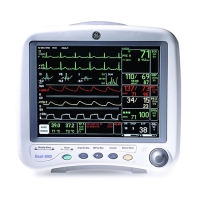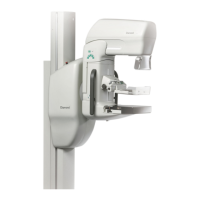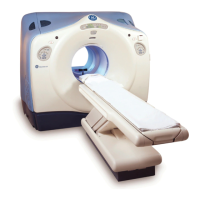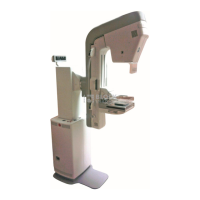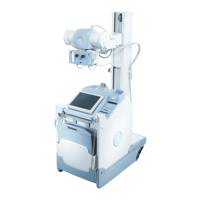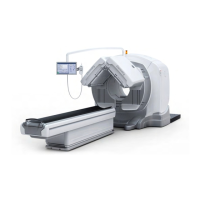Datex-Ohmeda S/5 Anesthesia and Critical Care Monitors
18
Document no. M1137263-04
2.3 Distributed processing
A system assembled from Datex-Ohmeda products is a multiprocessor system. All parameter
modules have their own microprocessor, which performs functions such as module key
control, waveform filtering, parameter related computing and pneumatic control, etc. At the
same time the main CPU performs higher level tasks such as trending and alarm control. While
the parameter modules and CPU are performing their tasks, the UPI (Universal Peripheral
Interface) microprocessor handles all functions needed to transfer data between the
parameter modules and the CPU. At the same time the Display controller microprocessor
performs pixel calculations for graphics.
Figure 3 Distributed processing in S/5 system
This kind of parallel processing gives one major advantage to centralized processing. When
new parameter modules or PC boards are added to the system, the processing power is
increased. As a result, the system does not slow down when new features are added.
2.4 Module communication
The communication master controlling data transfers between the CPU and parameter
modules is called UPI processor. It sends data to each connected module 100 times a second.
Modules respond to each data request immediately by sending a data package, whose length
depends on the type of the module. This communication protocol ensures that each module
receives and sends data every 10 ms. If a module does not respond to data requests, the UPI
processor presumes that the module is disconnected.
Parameter modules may hold a static (fixed) or dynamic address, which the UPI processor uses
when sending out data. Two parameter modules of the same type must not be fitted onto the
same monitor since they might reply to a data request simultaneously, thus causing
communication errors.
Module
Display
Command
Board/Bar
RAM
UPI
Display
Controller
Dual-port
RAM
CPU
System
memory
Display
memory

